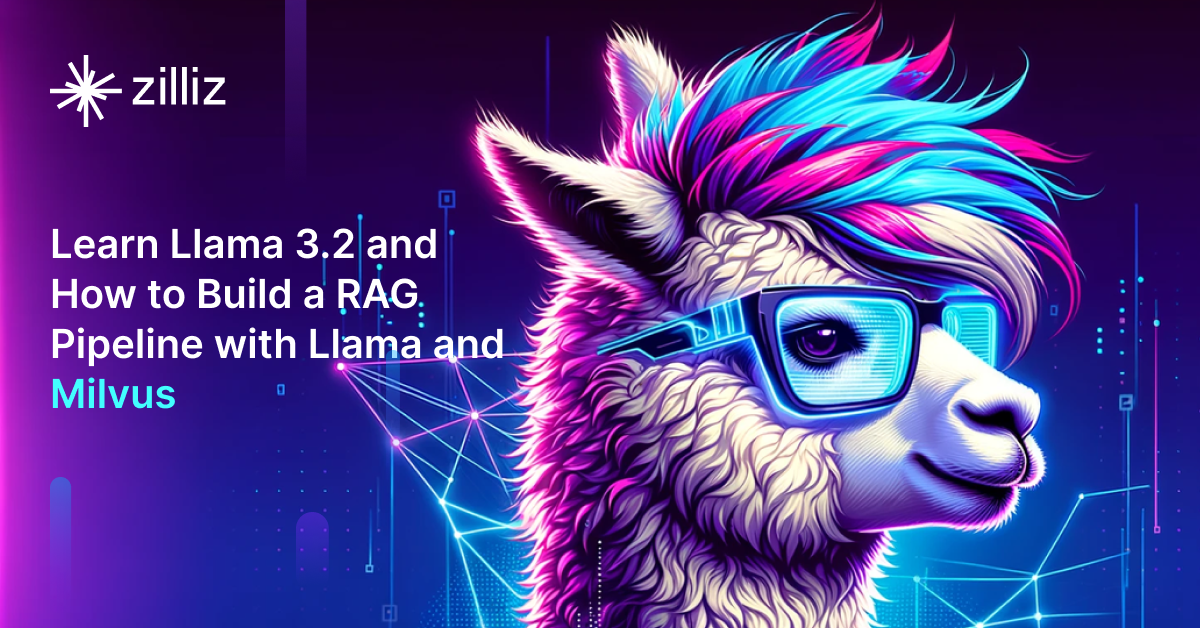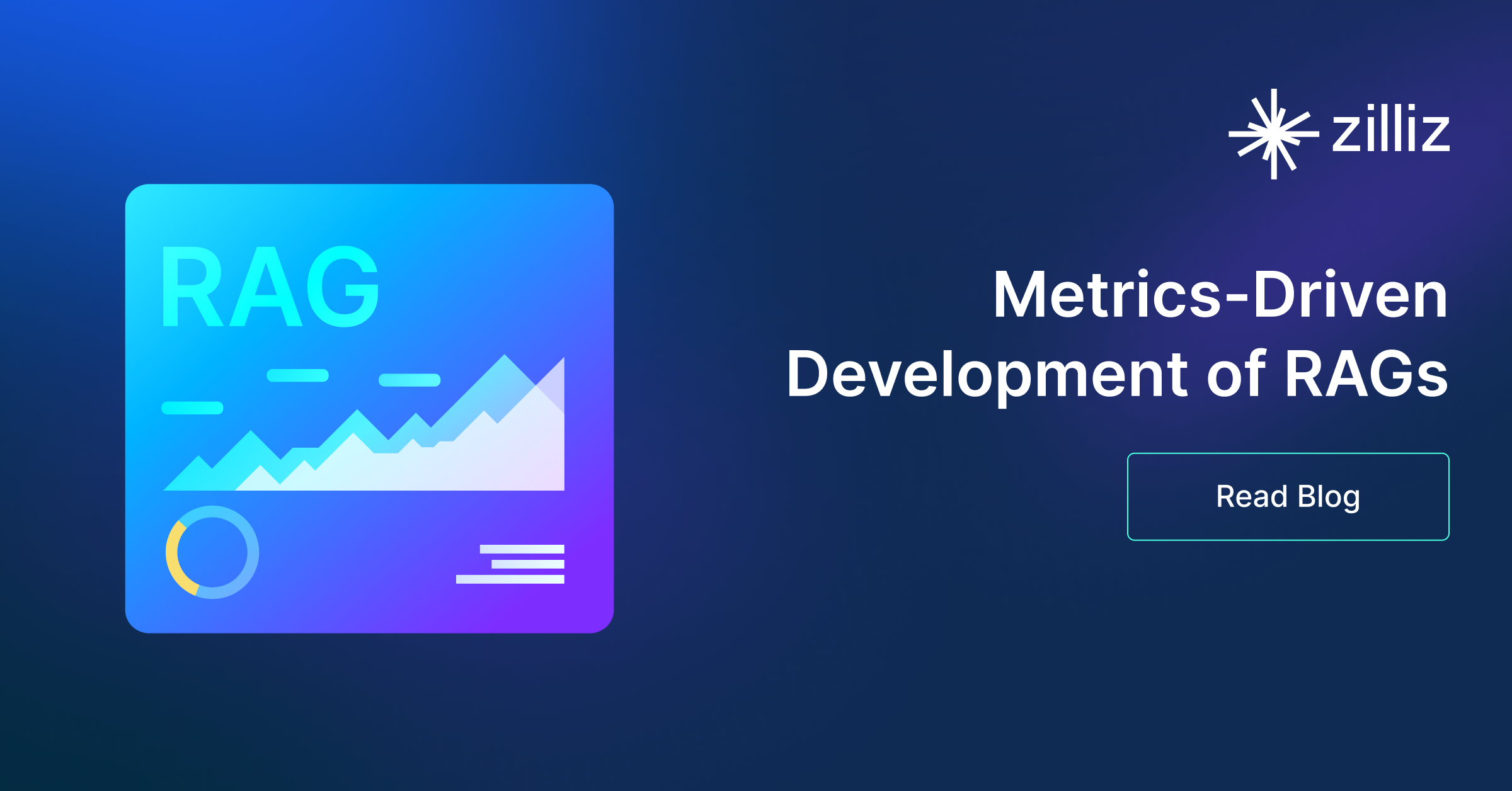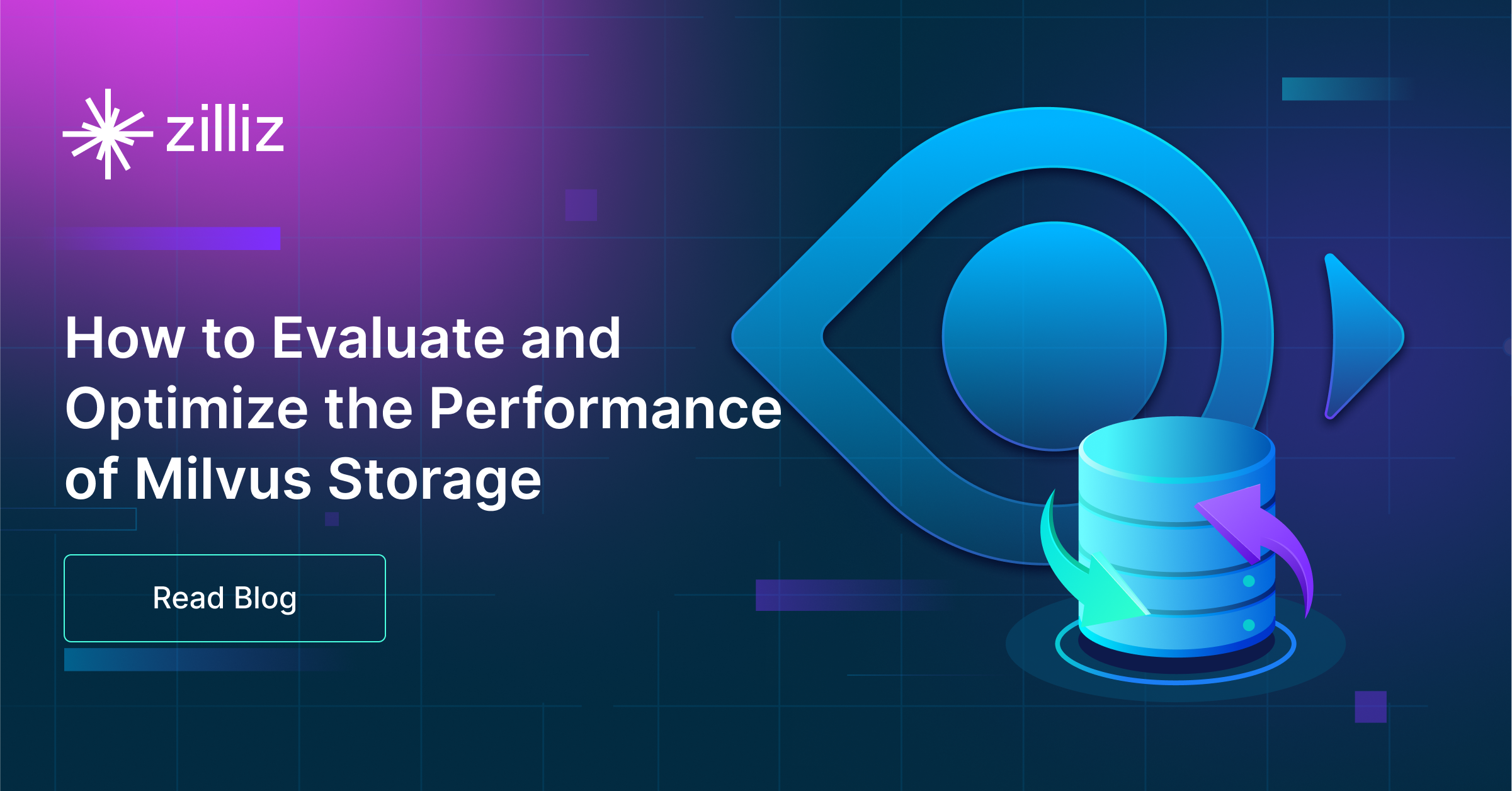Build RAG Chatbot with LangChain, OpenSearch, Google Vertex AI Gemini 2.0 Flash, and IBM granite-embedding-107m-multilingual
Introduction to RAG
Retrieval-Augmented Generation (RAG) is a game-changer for GenAI applications, especially in conversational AI. It combines the power of pre-trained large language models (LLMs) like OpenAI’s GPT with external knowledge sources stored in vector databases such as Milvus and Zilliz Cloud, allowing for more accurate, contextually relevant, and up-to-date response generation. A RAG pipeline usually consists of four basic components: a vector database, an embedding model, an LLM, and a framework.
Key Components We'll Use for This RAG Chatbot
This tutorial shows you how to build a simple RAG chatbot in Python using the following components:
- LangChain: An open-source framework that helps you orchestrate the interaction between LLMs, vector stores, embedding models, etc, making it easier to integrate a RAG pipeline.
- OpenSearch: An open-source search and analytics suite derived from Elasticsearch. It offers robust full-text search and real-time analytics, with vector search available as an add-on for similarity-based queries, extending its capabilities to handle high-dimensional data. Since it is just a vector search add-on rather than a purpose-built vector database, it lacks scalability and availability and many other advanced features required by enterprise-level applications. Therefore, if you prefer a much more scalable solution or hate to manage your own infrastructure, we recommend using Zilliz Cloud, which is a fully managed vector database service built on the open-source Milvus and offers a free tier supporting up to 1 million vectors.)
- Google Vertex AI Gemini 2.0 Flash: This model is designed for rapid deployment and high-performance machine learning tasks. With enhanced capabilities for natural language processing and image recognition, it excels in real-time analytics and automated decision-making. Ideal for businesses seeking quick insights and efficient model training across various applications, including chatbots and data analysis.
- IBM granite-embedding-107m-multilingual: This AI model specializes in generating multilingual embeddings, allowing for semantic understanding across various languages. With 107 million parameters, it excels in tasks such as cross-lingual retrieval, translation, and sentiment analysis, making it ideal for global applications that require nuanced understanding of diverse linguistic contexts.
By the end of this tutorial, you’ll have a functional chatbot capable of answering questions based on a custom knowledge base.
Note: Since we may use proprietary models in our tutorials, make sure you have the required API key beforehand.
Step 1: Install and Set Up LangChain
%pip install --quiet --upgrade langchain-text-splitters langchain-community langgraph
Step 2: Install and Set Up Google Vertex AI Gemini 2.0 Flash
pip install -qU "langchain[google-vertexai]"
# Ensure your VertexAI credentials are configured
from langchain.chat_models import init_chat_model
llm = init_chat_model("gemini-2.0-flash-001", model_provider="google_vertexai")
Step 3: Install and Set Up IBM granite-embedding-107m-multilingual
pip install -qU langchain-ibm
import getpass
import os
if not os.environ.get("WATSONX_APIKEY"):
os.environ["WATSONX_APIKEY"] = getpass.getpass("Enter API key for IBM watsonx: ")
from langchain_ibm import WatsonxEmbeddings
embeddings = WatsonxEmbeddings(
model_id="ibm/granite-embedding-107m-multilingual",
url="https://us-south.ml.cloud.ibm.com",
project_id="<WATSONX PROJECT_ID>",
)
Step 4: Install and Set Up OpenSearch
pip install --upgrade --quiet opensearch-py langchain-community
from langchain_community.vectorstores import OpenSearchVectorSearch
opensearch_vector_search = OpenSearchVectorSearch(
"http://localhost:9200",
"embeddings",
embedding_function
)
Step 5: Build a RAG Chatbot
Now that you’ve set up all components, let’s start to build a simple chatbot. We’ll use the Milvus introduction doc as a private knowledge base. You can replace it with your own dataset to customize your RAG chatbot.
import bs4
from langchain import hub
from langchain_community.document_loaders import WebBaseLoader
from langchain_core.documents import Document
from langchain_text_splitters import RecursiveCharacterTextSplitter
from langgraph.graph import START, StateGraph
from typing_extensions import List, TypedDict
# Load and chunk contents of the blog
loader = WebBaseLoader(
web_paths=("https://milvus.io/docs/overview.md",),
bs_kwargs=dict(
parse_only=bs4.SoupStrainer(
class_=("doc-style doc-post-content")
)
),
)
docs = loader.load()
text_splitter = RecursiveCharacterTextSplitter(chunk_size=1000, chunk_overlap=200)
all_splits = text_splitter.split_documents(docs)
# Index chunks
_ = vector_store.add_documents(documents=all_splits)
# Define prompt for question-answering
prompt = hub.pull("rlm/rag-prompt")
# Define state for application
class State(TypedDict):
question: str
context: List[Document]
answer: str
# Define application steps
def retrieve(state: State):
retrieved_docs = vector_store.similarity_search(state["question"])
return {"context": retrieved_docs}
def generate(state: State):
docs_content = "\n\n".join(doc.page_content for doc in state["context"])
messages = prompt.invoke({"question": state["question"], "context": docs_content})
response = llm.invoke(messages)
return {"answer": response.content}
# Compile application and test
graph_builder = StateGraph(State).add_sequence([retrieve, generate])
graph_builder.add_edge(START, "retrieve")
graph = graph_builder.compile()
Test the Chatbot
Yeah! You've built your own chatbot. Let's ask the chatbot a question.
response = graph.invoke({"question": "What data types does Milvus support?"})
print(response["answer"])
Example Output
Milvus supports various data types including sparse vectors, binary vectors, JSON, and arrays. Additionally, it handles common numerical and character types, making it versatile for different data modeling needs. This allows users to manage unstructured or multi-modal data efficiently.
Optimization Tips
As you build your RAG system, optimization is key to ensuring peak performance and efficiency. While setting up the components is an essential first step, fine-tuning each one will help you create a solution that works even better and scales seamlessly. In this section, we’ll share some practical tips for optimizing all these components, giving you the edge to build smarter, faster, and more responsive RAG applications.
LangChain optimization tips
To optimize LangChain, focus on minimizing redundant operations in your workflow by structuring your chains and agents efficiently. Use caching to avoid repeated computations, speeding up your system, and experiment with modular design to ensure that components like models or databases can be easily swapped out. This will provide both flexibility and efficiency, allowing you to quickly scale your system without unnecessary delays or complications.
OpenSearch optimization tips
To optimize OpenSearch in a Retrieval-Augmented Generation (RAG) setup, fine-tune indexing by enabling efficient mappings and reducing unnecessary stored fields. Use HNSW for vector search to speed up similarity queries while balancing recall and latency with appropriate ef_search and ef_construction values. Leverage shard and replica settings to distribute load effectively, and enable caching for frequent queries. Optimize text-based retrieval with BM25 tuning and custom analyzers for better relevance. Regularly monitor cluster health, index size, and query performance using OpenSearch Dashboards and adjust configurations accordingly.
Google Vertex AI Gemini 2.0 Flash optimization tips
Gemini 2.0 Flash is built for ultra-fast RAG applications, making it crucial to optimize efficiency and speed. Improve retrieval by minimizing the number of retrieved documents to avoid unnecessary token consumption. Structure prompts concisely, using bullet points or numbered lists for clarity. Set temperature to 0.1–0.2 for factual responses, fine-tuning top-p and top-k for variation control. Implement response caching for frequently queried topics to reduce latency. Take advantage of Google Cloud’s auto-scaling and GPU acceleration to maintain smooth performance under load. If using multiple models, leverage Flash for quick summarization and preliminary analysis before escalating queries to larger models.
IBM granite-embedding-107m-multilingual optimization tips
To optimize the IBM granite-embedding-107m-multilingual model in a Retrieval-Augmented Generation (RAG) setup, start by fine-tuning the model on domain-specific data to improve its relevance and contextual understanding. Use batch processing for embedding generation to enhance throughput, and implement caching mechanisms for frequently queried embeddings to reduce latency. Regularly evaluate and update your retrieval strategies using various metrics, such as precision and recall, to ensure you're consistently retrieving the most pertinent data. Additionally, consider augmenting your dataset with diverse multilingual inputs to develop a more robust understanding of different languages, and experiment with different hyperparameter settings, such as learning rates and embedding dimensions, to find the optimal configuration for your specific use case.
By implementing these tips across your components, you'll be able to enhance the performance and functionality of your RAG system, ensuring it’s optimized for both speed and accuracy. Keep testing, iterating, and refining your setup to stay ahead in the ever-evolving world of AI development.
RAG Cost Calculator: A Free Tool to Calculate Your Cost in Seconds
Estimating the cost of a Retrieval-Augmented Generation (RAG) pipeline involves analyzing expenses across vector storage, compute resources, and API usage. Key cost drivers include vector database queries, embedding generation, and LLM inference.
RAG Cost Calculator is a free tool that quickly estimates the cost of building a RAG pipeline, including chunking, embedding, vector storage/search, and LLM generation. It also helps you identify cost-saving opportunities and achieve up to 10x cost reduction on vector databases with the serverless option.
 Calculate your RAG cost
Calculate your RAG cost
What Have You Learned?
By diving into this tutorial, you’ve unlocked the power of combining cutting-edge tools to create a robust Retrieval-Augmented Generation (RAG) system! You learned how LangChain acts as the glue, orchestrating the flow between components with flexibility and ease. OpenSearch stepped in as your vector database hero, storing and retrieving embeddings efficiently, making your data lightning-fast to query. The IBM granite-embedding-107m-multilingual model transformed raw text into rich, context-aware embeddings, capturing meaning across languages—perfect for global applications. And Google Vertex AI’s Gemini 2.0 Flash brought the magic, generating human-like responses that feel natural and precise, even with complex queries. Together, these tools formed a seamless pipeline: ingesting data, encoding it, storing it smartly, and delivering answers that feel almost human. Plus, you picked up pro tips like optimizing chunk sizes for accuracy and using hybrid search strategies to balance speed and relevance. The free RAG cost calculator you explored? That’s your secret weapon for budgeting smarter and scaling fearlessly.
Now, imagine what’s next! You’ve got the blueprint to build anything from multilingual chatbots to real-time research assistants. Whether you’re tweaking embeddings for niche domains or experimenting with different LLMs, the possibilities are endless. This tutorial wasn’t just about code—it was about empowering you to solve real-world problems with AI. So, fire up your IDE, play with those APIs, and let your creativity run wild. The future of intelligent applications is in your hands. Build, iterate, and share what you create—because the world needs your innovations. Let’s go make something amazing! 🚀
Further Resources
🌟 In addition to this RAG tutorial, unleash your full potential with these incredible resources to level up your RAG skills.
- How to Build a Multimodal RAG | Documentation
- How to Enhance the Performance of Your RAG Pipeline
- Graph RAG with Milvus | Documentation
- How to Evaluate RAG Applications - Zilliz Learn
- Generative AI Resource Hub | Zilliz
We'd Love to Hear What You Think!
We’d love to hear your thoughts! 🌟 Leave your questions or comments below or join our vibrant Milvus Discord community to share your experiences, ask questions, or connect with thousands of AI enthusiasts. Your journey matters to us!
If you like this tutorial, show your support by giving our Milvus GitHub repo a star ⭐—it means the world to us and inspires us to keep creating! 💖
- Introduction to RAG
- Key Components We'll Use for This RAG Chatbot
- Step 1: Install and Set Up LangChain
- Step 2: Install and Set Up Google Vertex AI Gemini 2.0 Flash
- Step 3: Install and Set Up IBM granite-embedding-107m-multilingual
- Step 4: Install and Set Up OpenSearch
- Step 5: Build a RAG Chatbot
- Optimization Tips
- RAG Cost Calculator: A Free Tool to Calculate Your Cost in Seconds
- What Have You Learned?
- Further Resources
- We'd Love to Hear What You Think!
Content
Vector Database at Scale
Zilliz Cloud is a fully-managed vector database built for scale, perfect for your RAG apps.
Try Zilliz Cloud for Free


